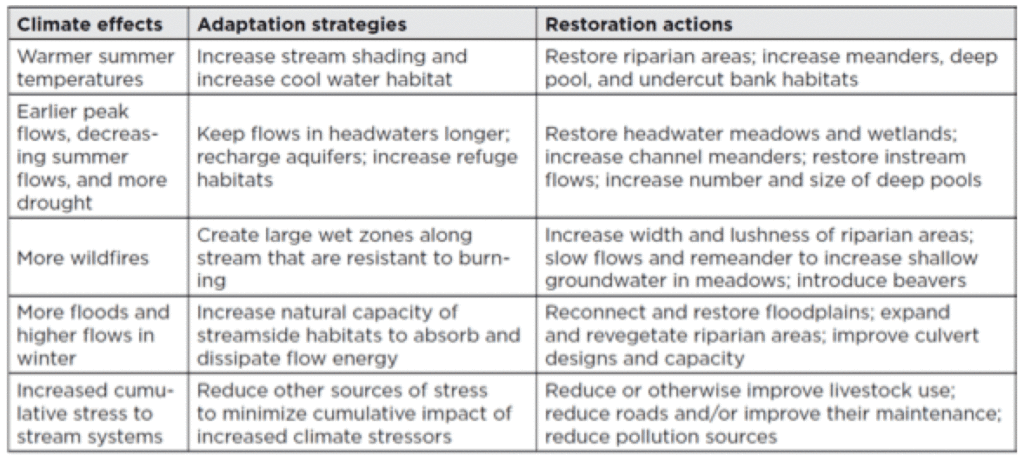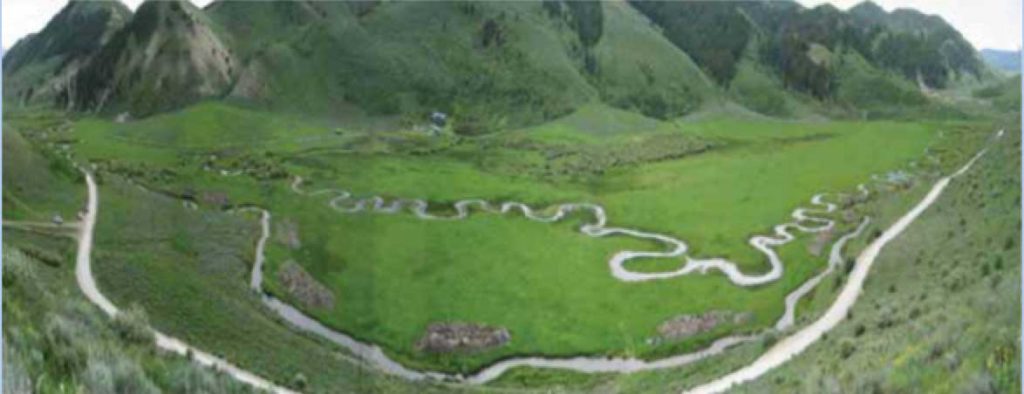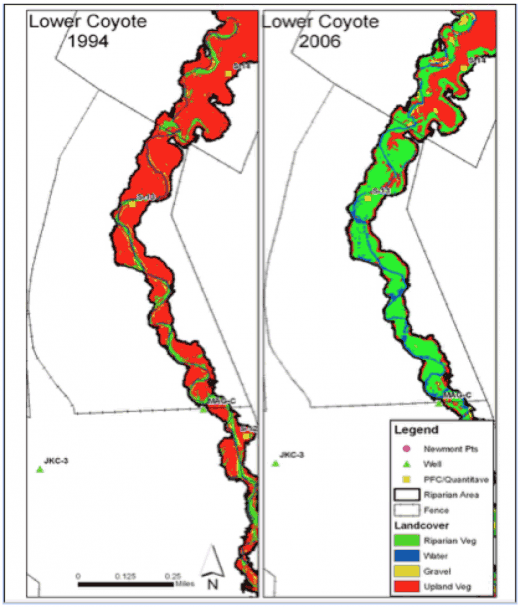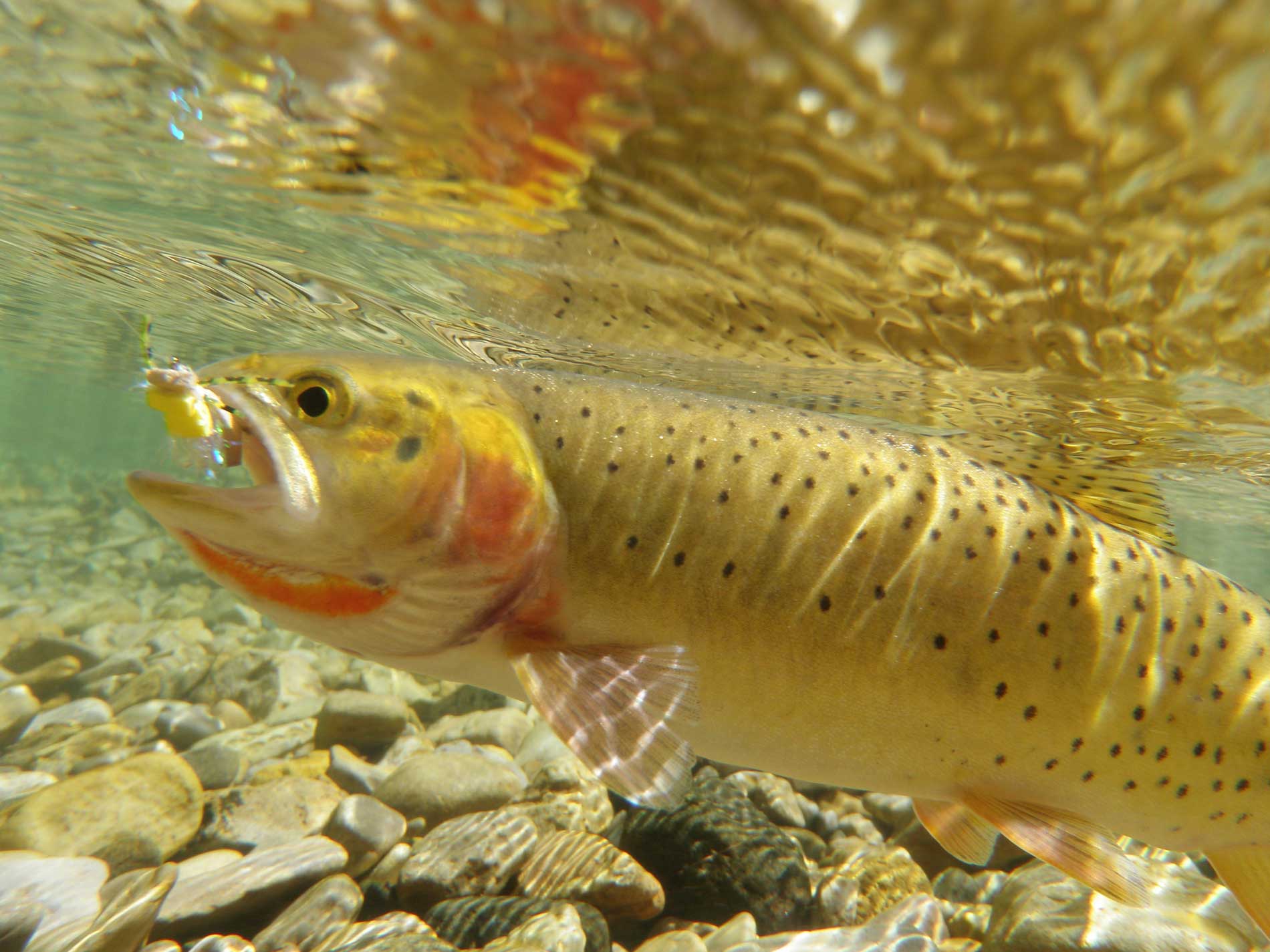Yellowstone cutthroat trout are the prime beneificiaries of climate change adaptation work done on Idaho’s Crow Creek Photo by Chris Hunt.
By Dr. Jack Williams
An old friend from back in our government days, Wayne Elmore, frequently noted that “when it’s all said and done, there will likely be more said than done.”
How true. Back then, Wayne was BLM’s riparian guru. The only thing he liked more than talking about the condition of western streams was doing something about it.
It’s the same with climate change. There is a lot of talk about the changing climate but relatively little action to counteract the forces of climate change. We should heed Wayne’s counsel and do more about it. Fortunately for our trout streams, there is much we can do.
The first International Trout Congress wrapped up recently in Bozeman, Mont. One of the primary questions of concern to trout managers and anglers from around the world is this: How do we keep trout streams cool in a warming future?
We know that air temperatures are getting hotter. Each month has been a record-setter this year and 2016 is poised to replace 2015 as the warmest year on record. Of course, it isn’t just warming temperatures that we are fighting against but also reduced snowpack and earlier runoff in many streams, increasing wildfires, and more intense floods and droughts. These problems are especially difficult to overcome when habitats already are fragmented and downstream reaches are full of non-native fishes.
Members of Trout Unlimited, along with our many partner organizations, design and implement hundreds of stream and riparian restoration projects each year. Even local riparian planting projects can help cool streams, especially when other stressors are removed and new plants are well-maintained. Can we be more strategic in choosing where we work and more effective in the work we do? We think the answer to both questions is a resounding YES!
At the Trout Congress, TU staff scientist Dr. Dan Dauwalter gave a presentation titled “Preparing Trout for a Warmer World Through Stream, Riparian and Watershed Restoration.” The presentation builds off years of work to improve stream restoration and address rapid climate change. A recent article published in the journal Fisheries also highlights much about what we have learned.
The following table provides a strategic approach to climate change impacts. Restoration actions can be small or large but must directly address climate effects. Regardless of the scale of restoration it is important to consider the larger watershed both in terms of existing condition and presence of non-native fishes that may invade restored habitats. Projects that reconnect the stream network by removing poorly designed culverts and dams can provide important new habitat options for trout but also might provide access for non-native species. Also, when thinking of projects in terms of watershed scales, remember that smaller but more numerous restoration actions in headwater streams can improve conditions in larger downstream reaches.

Check out this project along Crow Creek in Idaho. Many years ago, ranchers moved the stream to the edge of the valley to increase farming opportunities. A meandering stream was replaced with a straightened, faster-flowing channel. Recently, TU was able to work with the U.S. Forest Service to restore the natural channel and create deep pools that retain cool water in the face of stream warming. The photo below was taken just as water was being diverted back into historical channel from the straighter channel that parallels the road.

Now check out the table that shows the decreased gradient, meandering stream with numerous pools that provide cooler water for trout. Clearly these kinds of projects can make a big difference for trout.

Along Maggie Creek in Nevada, the changes have been just as striking but that project has focused on an entire watershed of private ranches and BLM public lands. Hot season grazing was sharply curtailed and riparian areas were protected. Once the vegetation started coming back, beavers returned and the once narrow and mostly scant riparian areas blossomed. The beavers held back the water and sagebrush flats were transformed into lush meadows.
Check out this aerial image comparing vegetation cover type in Coyote Creek, one of the tributaries of Maggie. The amount of lush riparian vegetation increased dramatically. The stream stayed wet during last year’s drought and is now an important habitat for Lahontan cutthroat trout. When wildfire comes, and the frequency of wildfire is increasing in this region due not only to hotter and dryer conditions but also the presence of invasive cheatgrass, trout will be more likely to survive in the pools located within the wet meadows.

Finally, it may be just as important to decide where to work as what kind of work to do. Many factors should influence where to work including existing condition of the habitat, whether the fundamental causes of degradation can be addressed, the potential for improvement, and the ability of the stream to resist climate impacts or to recover from increasing disturbances such as floods and wildfires. Researchers from the U.S. Forest Service have identified streams in the West that are not warming as rapidly as others and can serve as a climate shield against warming. Those streams are critical to restore where needed and to protect.
During the early 1990s, BLM established a goal that called for 75 percent of riparian areas on public lands to be in good condition by 2000. It was a lofty goal considering the often poor conditions of many western rangelands but improvements were made thanks to the persistence of folks like Wayne Elmore back then. I know Wayne would approve of what TU, BLM, and local ranchers have done on Maggie Creek, and he would approve of the many improvements TU has made to streams across the country while admonishing us to do even more.
Jack Williams is TU’s senior scientist. He works from Medford, Ore.



